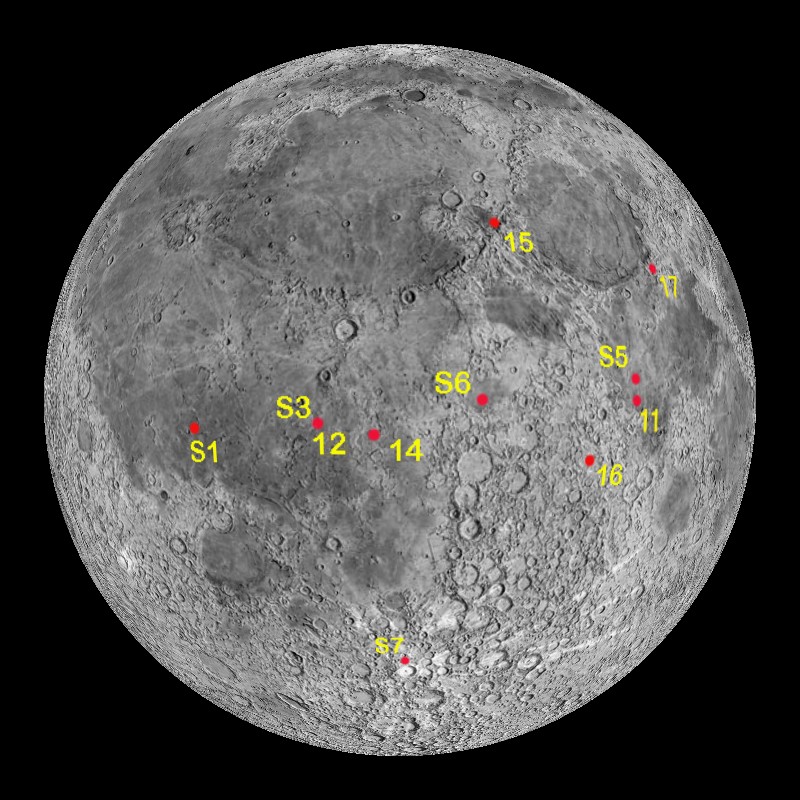Forty-five years ago today — September 8, 1967 — an Atlas Centaur launch vehicle carried the Surveyor 5 lander out of Cape Canaveral on its way to the moon.

(Surveyor and Apollo landing sites. Note the close proximity of Surveyor 5 (S5) and Apollo 11. NOAA image.)
Surveyor 5 landed on the moon on September 11, 1967, but not until mission controllers overcame a hardware problem. After the midcourse correction
the spacecraft began losing helium pressure. It was concluded that the helium pressure valve had not reseated tightly and the helium was leaking into the propellant tanks, causing an overpressure which opened the relief valves, discharging the helium. A new emergency landing plan was adopted. Early vernier engine firings were made while there was still helium to slow the spacecraft, reduce its mass, and leave more free volume in the propellant tanks for the helium. The burn of the main retrorocket was delayed [to] an altitude of 1300 meters at a velocity of 30 m/s rather than the planned 10,700 meters at 120 to 150 m/s.
Surveyor 5 landed in the southwest area of Mare Tranquillitatis — the Sea of Tranquility. Two years later, Neil Armstrong and Buzz Aldrin would land Apollo 11 about 30 km away from Surveyor 5’s landing site.
The Surveyor 5 spacecraft operated on the lunar surface for 4 lunar days — shutting down during each 2-week-long lunar night — and sent its final transmission on December 17, 1967.








